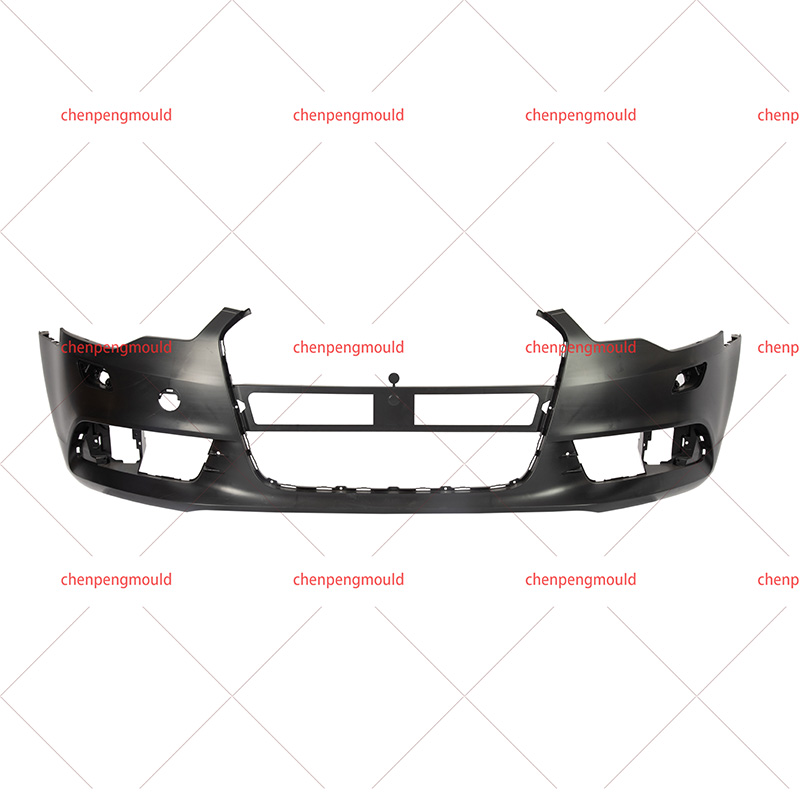China Front Rear Bumper Molding Mold Manufacturer Factory
Bumper mold technology has become a crucial component in the automotive industry, playing a key role in the production of vehicle bumpers. Bumpers are essential not only for protecting the vehicle during low-speed collisions but also for their aesthetic value and ability to integrate with other vehicle systems. The technology used to create these bumpers, specifically bumper molds, has evolved significantly over the years, resulting in improved manufacturing processes, materials, and final product quality.
Bumper molds are used in the injection molding process, where a specific material (usually plastic) is injected into a mold to form the desired shape of a bumper. The mold design, material choices, and manufacturing process all influence the durability, functionality, and appearance of the final bumper.
Key Components of Bumper Mold Technology
Bumper mold technology involves several important elements that work together to produce high-quality bumpers. These elements include the mold design, the material used for injection, the molding process, and post-processing steps. Each of these components plays a significant role in ensuring the bumper performs well under various conditions, such as impact resistance, temperature fluctuations, and aesthetic considerations.
1. Mold Design
The design of the bumper mold is a critical factor in determining the quality and precision of the final bumper. The mold must be designed with accuracy to ensure that the bumper fits the vehicle's specifications. Advanced Computer-Aided Design (CAD) software and simulation tools are often used in the design process to optimize the shape, dimensions, and internal features of the bumper. These tools help reduce errors in the mold and ensure the bumper's fitment is good.
Molds can be single-cavity or multi-cavity, depending on the number of bumpers that need to be produced at once. Multi-cavity molds are more efficient, as they allow several bumpers to be molded simultaneously, thereby increasing production capacity and reducing cycle time.
2. Material Selection
The material used in bumper mold technology plays a major role in determining the durability, flexibility, and cost-effectiveness of the final product. Traditionally, automotive bumpers were made from metals like steel or aluminum, but modern bumpers are primarily made from advanced polymers such as polypropylene (PP), acrylonitrile butadiene styrene (ABS), or thermoplastic elastomers (TPE).
Polypropylene (PP) is a commonly used material due to its low cost, good chemical resistance, and ability to be molded into complex shapes. It also offers a balance between rigidity and flexibility, making it suitable for absorbing impacts.
Acrylonitrile Butadiene Styrene (ABS) is known for its impact resistance and toughness, making it a popular choice for bumpers that need to withstand high-force impacts while maintaining an attractive appearance.
Thermoplastic Elastomers (TPE) combine the durability of plastic with the flexibility of rubber, allowing bumpers to absorb impacts without cracking or breaking.
The choice of material depends on factors such as vehicle type, expected impact conditions, and cost constraints.
3. Injection Molding Process
Injection molding is the common method used to produce automotive bumpers. In this process, plastic pellets are fed into a heated barrel, where they are melted and injected into a mold cavity under high pressure. The mold is then cooled, allowing the plastic to solidify and take the shape of the bumper.
The injection molding process is highly automated, offering high production speeds and the ability to create complex shapes with precision. Some advanced technologies, such as gas-assisted injection molding or multi-shot molding, are used to improve the functionality and design of the bumpers. These methods enable the inclusion of lightweight materials or the integration of multiple materials (e.g., combining soft elastomers for impact absorption and rigid plastics for strength).




 +86-18357617666
+86-18357617666








